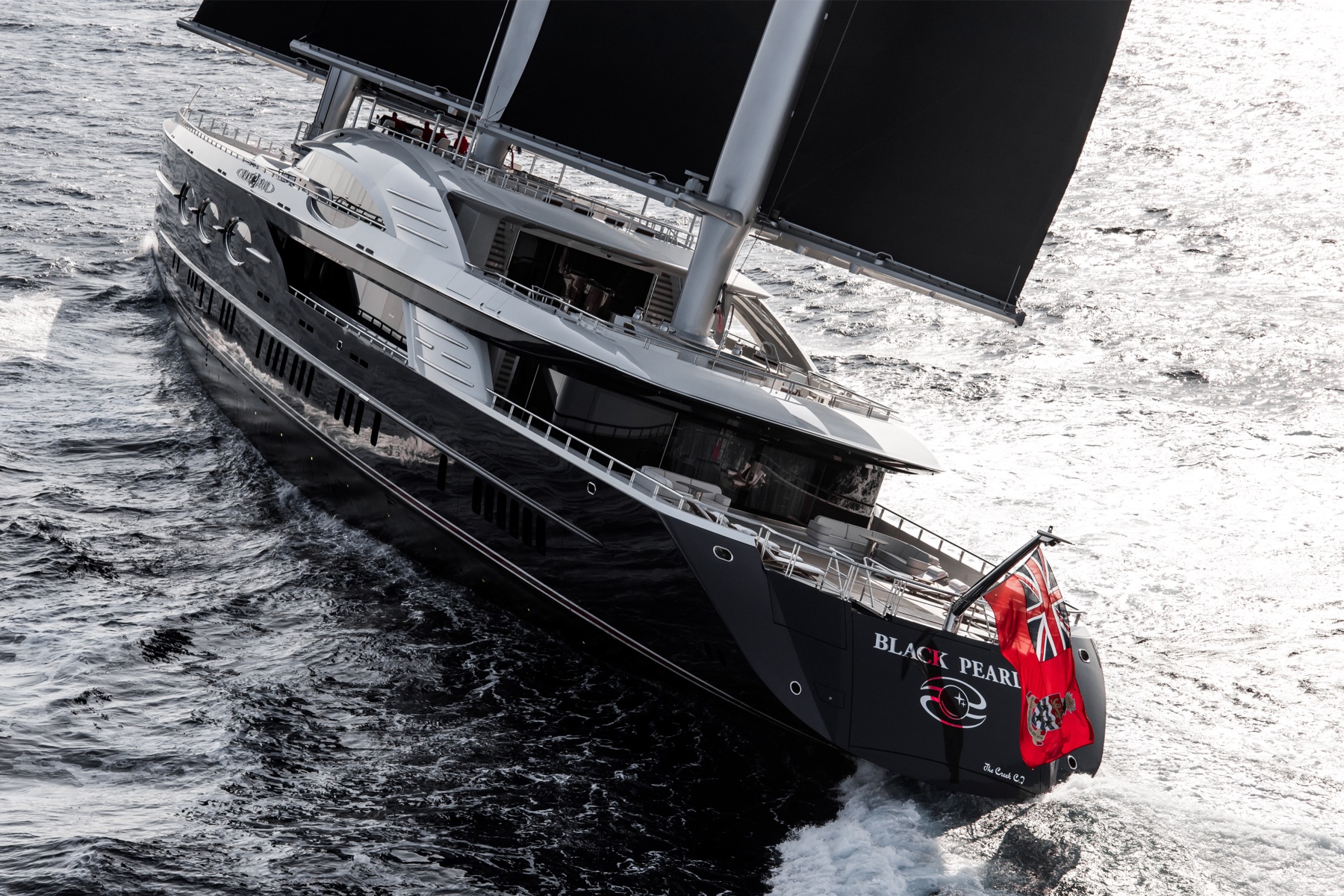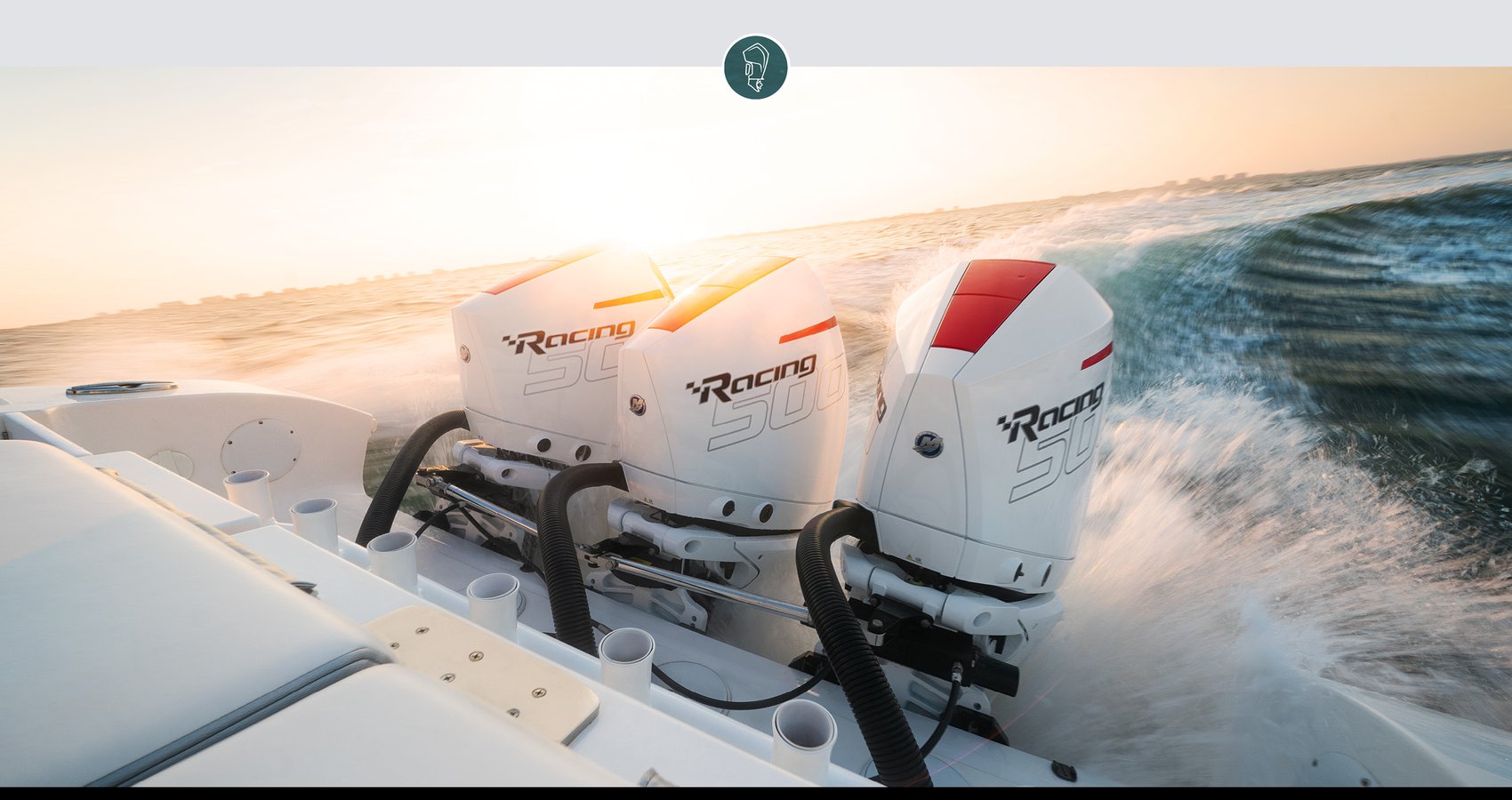Parts of a Boat: Essential Components Explained
Boating is an exciting activity that provides a unique blend of adventure, relaxation, and connection with nature. Learning the basic parts of a boat and understanding the terminology is vital to mastering navigation and ensuring safety on the water. Boats come in diverse shapes and sizes, from modest rowboats to luxurious yachts, each serving specific purposes and requiring different levels of knowledge.
The anatomy of a boat consists of essential components such as the hull, bow, stern, port, and starboard sides. Knowledge of these parts allows for effective communication and improved maneuverability on the water. Whether you're a novice or an experienced skipper, it's important to understand parts and terminology related to movement, boat equipment, and open deck areas, as well as specific aspects of sailboats and fishing vessels.

Key Takeaways
- Familiarity with basic boat parts and terminology enhances navigation and safety on the water.
- Boats come in various forms and sizes, each with specific purposes and features.
- Understanding the unique aspects of sailboats, fishing boats, and other vessel types ensures an enjoyable and safe boating experience.
Basic Parts of A Boat
Bow
The bow refers to the front part of the boat. It is designed to cut through water with minimal resistance, allowing the boat to move smoothly and efficiently. The shape of the bow can vary depending on the boat's intended use, but it is generally narrow and pointed.
Stern
The stern is the rear part of the boat. It can have different shapes and features, such as a flat transom or a rounded shape. The stern is where the boat's propulsion system, like an outboard motor or inboard engine, is typically located.
Hull
The hull is the primary structure of the boat, providing both support and buoyancy. It is comprised of the boat's outer shell and is designed to withstand a variety of conditions, including waves and impact from abrasion or collisions. Hulls are generally made from materials like fiberglass, aluminum, steel, or wood.
Deck
The deck is the flat surface on the boat's top, providing open spaces for passengers and crew. It is often used for recreational activities, such as sunbathing, fishing, or socializing. Decks can be made of various materials, including wood, fiberglass, or metal.
Cabin
The cabin is the enclosed space within the boat that provides shelter and living accommodations for the passengers and crew. Cabins are usually found on larger boats and can include sleeping quarters, a galley (kitchen), and bathroom facilities.
Keel
The keel is the boat's backbone, running longitudinally along the bottom of the hull. It provides structural support and stability. In sailing boats, the keel also serves as a counterweight and assists with lateral resistance when sailing upwind.
Bridge
The bridge is the command center of larger boats or ships, housing the navigation and control systems. It is typically located near the top of the vessel, providing a clear and unobstructed view for the captain and crew. The bridge contains essential equipment such as radar, GPS, communication devices, and steering controls.
In summary, the basic parts of a boat include the bow, stern, hull, deck, cabin, keel, and bridge. These components work together to ensure a smooth and safe experience for passengers and crew alike.

Position Indicators
Port Side
The port side of a boat refers to the left side when facing the front or forward part of the boat. This is an important position indicator as it helps sailors and passengers ensure they are navigating the waters correctly. The port side is usually marked with red navigation lights to indicate its position in low visibility conditions. The term aft refers to the rear part of the boat, which is closest to the port side.
Starboard Side
On the other hand, the starboard side is the right side of the boat when facing forward. It is a crucial position indicator that allows sailors to distinguish their right side from the left side. Starboard side is typically marked with green navigation lights to differentiate it from the port side in low light or foggy situations. During navigation, a boat should ideally pass other boats on its starboard side, which means the other boat should be on its ahead and port side. The term astern refers to the rear part of the boat, which is closest to the starboard side.
Both port and starboard sides are essential for properly navigating and maneuvering the boat while sailing. Understanding the differences between these position indicators ensures safe and efficient movement at sea. Knowing the forward, aft, astern, and ahead concepts in relation to the port and starboard sides further establishes a solid foundation for any boating enthusiast.

Terms Related to Movement
Right Side
The right side of a boat is referred to as the starboard side. When a boat is moving forward, this is the side on the right. The term starboard originates from the old nautical term "steorbord" which refers to the side where the steering oar was placed. Most boats today have a green navigational light on the starboard side.
Left Side
The left side of a boat is called the port side. Just as with the starboard side, the port side's name has its origins in nautical terminology. The port side was originally called "larboard," but due to its similarity in pronunciation with starboard, "port" was adopted as the term. Today, boats have a red navigational light on the port side.
Back of a Boat
The back of a boat is known as the stern. This is the area where the boat's propulsion system, such as the motor or propeller, is usually located. When a boat is adrift, the stern can be a critical spot for maintaining control and making necessary adjustments to the vessel's movement.
Front of a Boat
The front part of a boat is called the bow. This is the area that cuts through the water as the boat moves forward. The waterline of a boat refers to the point where the hull meets the water's surface; this varies depending on the vessel's load and can impact its movement.
When discussing movement in nautical terms, speed is often measured in knots, which is equivalent to one nautical mile per hour. Knowing the speed of a boat is important for navigation, fuel consumption, and safety. Sailors must also be aware of the possibility of a boat running aground, which means the vessel's hull is in contact with the sea floor, often resulting in damage or being stuck in place. A grounded boat can impact vessel trajectory and movement.

Boat Equipment
Cleat
A cleat is an essential piece of boat equipment used for securing lines. It is a T-shaped or Y-shaped hardware component, commonly made of metal or plastic, that allows for easy tying and untying of ropes or lines. Cleats are crucial for docking, anchoring, and tying boats to other floating devices. They can be attached to the deck, side railings, or the mast base to provide a secure point for lines.
Line
Lines are important for various tasks on a boat, such as mooring, anchoring, or towing. They are typically made of synthetic materials like nylon or polyester, which are durable and resistant to UV radiation, saltwater, and chemicals. When selecting a line for specific tasks, it's essential to consider factors such as strength, stretch, and resistance to abrasion. Among other parts of a boat, lines are often used in conjunction with cleats and fenders to ensure secure docking.
Fenders
Fenders are cushioning devices used to protect a boat's hull from damage caused by contact with docks, piers, or other boats. They are typically made of soft, flexible materials like foam or inflatable plastic and are designed to absorb impact and distribute pressure. Placed between the boat and the docking area, fenders can prevent potential damage such as scratches, dents, or chipping paint.
Gate
A gate on a boat refers to an opening in the railings or lifelines, allowing the crew and passengers more accessible entry or exit. Gates are often found on sailboats and yachts. To ensure safety, they are usually equipped with a latching mechanism or locking device, preventing accidental opening while the boat is underway.
In addition to the above-listed components, some other crucial boat parts include:
- Outboard Motor: A detachable engine unit mounted on the stern (rear) of the boat, providing propulsion. Outboard motors are typically self-contained, housing the engine, gearbox, and propeller in one unit.
- Anchor: A weighted, hook-like device that secures boats to the seabed or riverbed, preventing them from drifting due to wind or currents. It is connected to the boat by an anchor line or chain.
- Helm: The steering control area, typically consisting of a wheel or tiller, which allows the operator to maneuver the boat.
- Propeller: A rotating fan-like device connected to the boat's engine, responsible for generating thrust and propelling the boat forward or backward.
- Mast: A tall, vertical pole on a sailboat that supports the sails and rigging.
- Rudder: A flat, vertical panel, usually mounted beneath the boat's stern, which helps steer the boat when turned by the helm.
Boat equipment plays a crucial role in operating and maintaining a vessel safely and efficiently. Ensuring that these components are in good condition and used properly is essential for a successful boating experience.

Open Deck Areas
Open deck areas on a boat serve various purposes and often host different types of equipment, providing both functionality and comfort to the passengers. This section will discuss three subsections, focusing on the galley, rod holder, and throttle.
Galley
The galley is an essential part of any boat with an open deck area, similar to a kitchen found on land. It often includes facilities for cooking, refrigeration, storage, and meal preparation. A well-designed galley allows passengers to prepare meals while enjoying the outdoor surroundings. Located near the bulkhead, it provides easy access to other deck areas like the bridge and cockpit.
Rod Holder
A rod holder is a crucial piece of equipment for recreational boating, especially for those who enjoy fishing. It securely holds fishing rods in place and allows anglers to fish hands-free, increasing safety and convenience. Rod holders are typically located near the boat's casting deck and pulpit, offering easy access while fishing. It is essential to ensure that rod holders stay clear of the boat's swim platform to minimize accidents or obstructions.
Throttle
The throttle controls the boat's speed and is a vital component that falls under open deck areas. Located in the cockpit or near the boat's bridge, the throttle allows the operator to control the boat's engine power and steer it safely. A smooth and responsive throttle is essential for safe and enjoyable boating experiences.
In conclusion, open deck areas of a boat include essential facilities and equipment that provide comfort, functionality, and entertainment for passengers. Understanding the role and location of the galley, rod holder, and throttle can significantly enhance the overall boating experience.

Sailboat Specifics
Sailboats are designed with various distinctive parts that contribute to their unique sailing capabilities. This section will discuss three specific components of a sailboat: the Ballast, Forestay, and Centerboard.
Ballast
The ballast is an essential element in a sailboat's stability. It is typically found at the bottom of the boat and is responsible for providing a low center of gravity, counteracting the heeling force induced by the sails' wind pressure. The ballast is often made of dense materials like lead or iron and accounts for a significant portion of the boat's overall weight. A well-designed ballast ensures that the sailboat maintains its balance and returns to an upright position after being heeled by the wind.
Forestay
The forestay is a vital part of the sailboat's rigging, as it secures the mast's forward end. This cable or rod connects the bow (front) of the boat to the top of the mast, providing support and tension to the mast and helping maintain its shape. The forestay is also crucial for attaching the jib, a smaller triangular sail set forward of the mainsail. The jib can improve the boat's overall performance, allowing it to point more effectively into the wind and increasing maneuverability.
Centerboard
A centerboard is a movable fin located at the sailboat's bottom middle portion, allowing the boat to change its draft (submerged depth) and optimize its performance. The primary functions of a centerboard are to combat leeway, generating lift under the boat and preventing it from being pushed sideways by the wind, and to help control the sailboat's balance.
The centerboard can be raised or lowered as needed, providing the desired level of stability and maneuverability. It can be retracted entirely to allow the sailboat to move through shallow waters or for transportation purposes. Thus, the centerboard is an essential factor in a sailboat's flexibility and adaptability.
In summary, the ballast, forestay, and centerboard are crucial components of a sailboat that contribute to its stability, rigging, and overall sailing performance. These parts work together, enabling sailboats to harness wind power effectively and provide an enjoyable sailing experience.

Boating Terminology
When it comes to boating, understanding the terminology can be crucial for a safe and enjoyable experience. This section aims to provide you with a clear and concise explanation of some essential boating terms.
Rail
The rail is an essential part of a boat, serving as a safety barrier and also adding stability. It is located along the outer edge of a boat's deck, ensuring that passengers do not accidentally fall overboard. Typically, the rail is made of durable materials such as stainless steel or aluminum, to withstand harsh marine conditions.
Hatch
A hatch refers to a door or opening that provides access to different sections of a vessel. It can be found on both the exterior and interior of a boat. Hatches serve various purposes, such as ventilation, emergency escape routes, and access to storage compartments. They are typically designed with watertight seals to prevent water from seeping in and damaging the vessel's interiors or essential equipment.
Bulkhead
In boating terminology, a bulkhead refers to a structural partition that separates different compartments within a ship. Bulkheads are vital for the vessel's stability and play a crucial role in maintaining its integrity and balance while at sea. Additionally, they also provide a degree of fire protection, as they can act as a barrier between sections of the boat in case of a fire breakout.
Livewell
A livewell is a specialized compartment on a fishing boat that serves to keep bait and caught fish alive while onboard. This container is filled with water, and usually has an aeration system to maintain oxygen levels and ensure the wellbeing of the fish. Livewells are essential for anglers who participate in catch-and-release fishing or need to keep their catches fresh until they return to shore.
By understanding these essential boating terms, one can navigate vessels more effectively and safely, and fully appreciate the complexities of ships and boats.

Other Key Aspects
Bilge
The bilge is a crucial part of a boat located at the lowest point of the hull, responsible for collecting any water or oil that may accumulate inside the vessel. It is important to have a functional bilge pump in place to ensure the boat remains safe and seaworthy. The beam of the boat plays a role in determining how much water the bilge can handle. A wider beam allows for more water storage capacity and makes it more stable.
Draft
The draft of a boat refers to the depth of water needed for it to float freely without touching the bottom. This measurement plays a significant role in deciding where a boat can travel, as some areas may not be navigable due to shallow waters. The draft directly relates to the boat's design, including the freeboard and hull shape. A larger draft may lead to a more stable vessel in rough waters, while a smaller draft benefits boats navigating shallow areas.
Head
The head is the maritime term for the boat's toilet. It is an essential component on any vessel equipped for overnight trips or extended cruises. Proper maintenance of the head and its plumbing system is crucial for sanitation and ensuring a pleasant experience for passengers onboard. Some larger boats may feature more sophisticated systems, including separate shower areas or pump-out systems.
Door
The doors on a boat differ from those found on land; they need to be watertight, designed to withstand harsh marine conditions, and must not compromise the overall integrity of the vessel. The material used for the door construction varies, often including high-quality stainless steel or aluminum. In some cases, doors may be equipped with air-tight seals and locking mechanisms to prevent water ingress during rough seas.
In conclusion, understanding key aspects such as the bilge, draft, head, and doors is essential for boat owners and enthusiasts. Considering other elements like beam, freeboard, transom, and gunwale will provide further insight into the boat's stability, navigation capabilities, and overall design.

Fishing Boat Essentials
When it comes to enjoying a day on the water, having the right essentials on your fishing boat can make all the difference. This section covers some of the must-have components for a successful fishing trip: the Tiller, Bimini, and Console.
Tiller
The tiller is an essential part of any fishing boat, as it is used to steer the vessel. It is typically attached to the boat's outboard motor or rudder and allows the operator to control the direction of the boat. A tiller provides excellent maneuverability and is ideal for navigating tight spaces and shallow waters, which are often found in prime fishing spots. In addition, many fishing boats come equipped with rod holders, just behind the tiller, making it easy for anglers to keep their fishing gear within reach.
Bimini
A bimini is a type of canopy that provides shade and protection from the elements while on the water. It is especially useful for anglers who spend long hours exposed to the sun and elements. A bimini can be easily installed on most fishing boats and can usually be folded down when not in use. It also adds an extra layer of comfort and protection for those on board.
For added convenience, some biminis have built-in rod holders, allowing anglers to secure their fishing rods while taking a break from casting. A good bimini can make the difference between an enjoyable day on the water and an endurance test against the elements.
Console
The console is the control center of the fishing boat, housing essential instruments and controls needed for navigation, communication, and boat operation. Located near the steering wheel, the console should contain the necessary equipment such as a GPS system, VHF radio, and depth finder to aid anglers in their fishing expeditions.
A well-designed console also provides space for mounting additional tools and storage, such as a livewell. Livewells are valuable components for keeping bait and caught fish alive and in optimal condition until the angler is ready to return to the shore. There should also be dedicated spots for storing extra fishing equipment, such as tackle boxes and spare rods.
In summary, having a well-equipped fishing boat with essential components like the tiller, bimini, and console will make for a more enjoyable and efficient angling experience. These crucial parts ensure that the angler is ready for whatever challenges the water may bring, allowing them to focus on the main task at hand: catching fish.

Frequently Asked Questions
What is the right side of a boat called?
The right side of a boat is called the starboard side. This term is used to refer to the right side when facing forward on a boat.
What is the back of the boat called?
The back of a boat is known as the stern. The stern is the rear section of a vessel that helps provide stability and aid in the steering process.
What are the 4 basic parts of a boat?
The four basic parts of a boat are the hull, deck, engine, and sails (in sailboats). The hull is the main body of the boat, providing buoyancy and protection from water. The deck is the flat surface that covers the hull and supports the occupants and any equipment. The engine propels the boat, and the sails are used for harnessing wind energy in sailboats.
What is the cockpit of a boat called?
The cockpit of a boat is called the helm. The helm is the part of the boat where the captain or helmsman steers and controls the vessel. This area typically includes a steering wheel, throttle, and navigation equipment.
What is the outer part of the boat?
The outer part of the boat refers to the hull and deck. The hull is the structural component that keeps the boat afloat, while the deck is the part that occupants walk on. The hull and deck together form the external shell of the boat, protecting it from water and providing stability.
What are boat parts called?
Boat parts are usually referred to by specific names such as hull, deck, mast, rudder, and keel, among others. Each part serves a unique function in the overall operation and stability of the boat, making it essential for boat owners to be familiar with these terms.
Charlie is Editor-in-Chief of Sea Magazine







